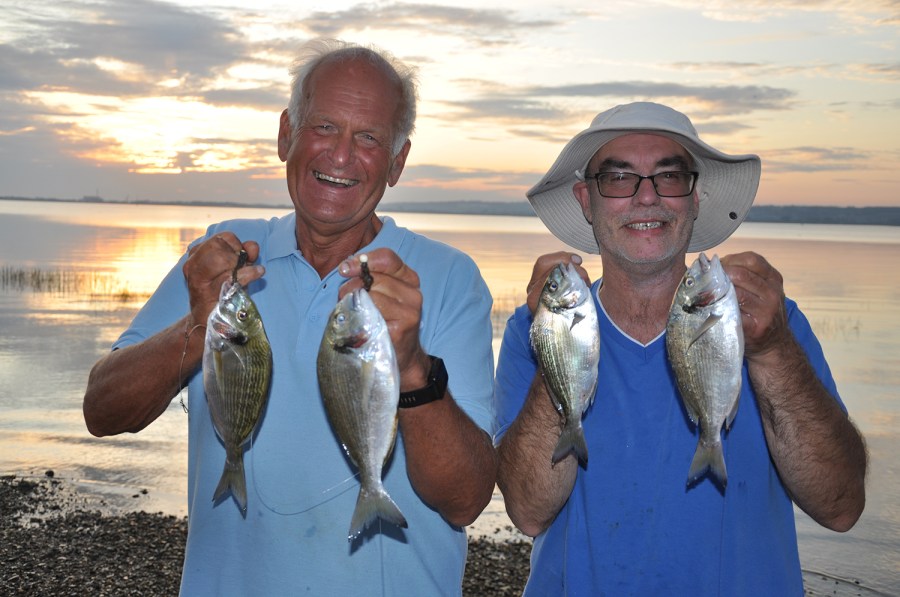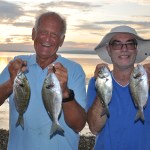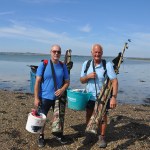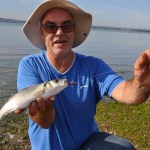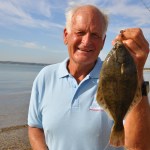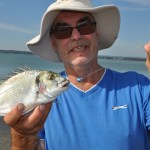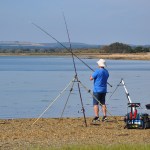England selector Chris Clark remembers a day out with his friend, the late, great Ian Golds…
My struggle through the heavy bank holiday traffic on the M27 to go fishing with my old friend and England teammate Ian Golds seemed a nightmare at the time, but was a mere irritant compared to the real battle he was fighting against cancer.
It was August 2019 and a day of mixed emotions, for I was on a mission to see Ian who could raise anyone’s spirits in the worst of times. Looking back with a heavy heart after he lost his courageous fight in April this year at the age of 62, it was the last time we fished side by side for the fun of it. It was away from the match scene, just mates together. In Goldsie’s company, fishing was always extra special.
We’d first met in the 1970s during a club match at Southampton docks when he arrived on a motorbike. We’ve been friends ever since and shore fished together for England at many World Championships. His international career began in 1989 in Ireland, where he was part of the England team that won the silver medal. His career up to 2019 would produce 14 World Championship medals, including three golds as a competitor, and a gold and silver as the team manager. Of course, another of his claims to fame was the not inconsiderable achievement of producing his superb rod-rest tripods and the Igloo beach shelter.
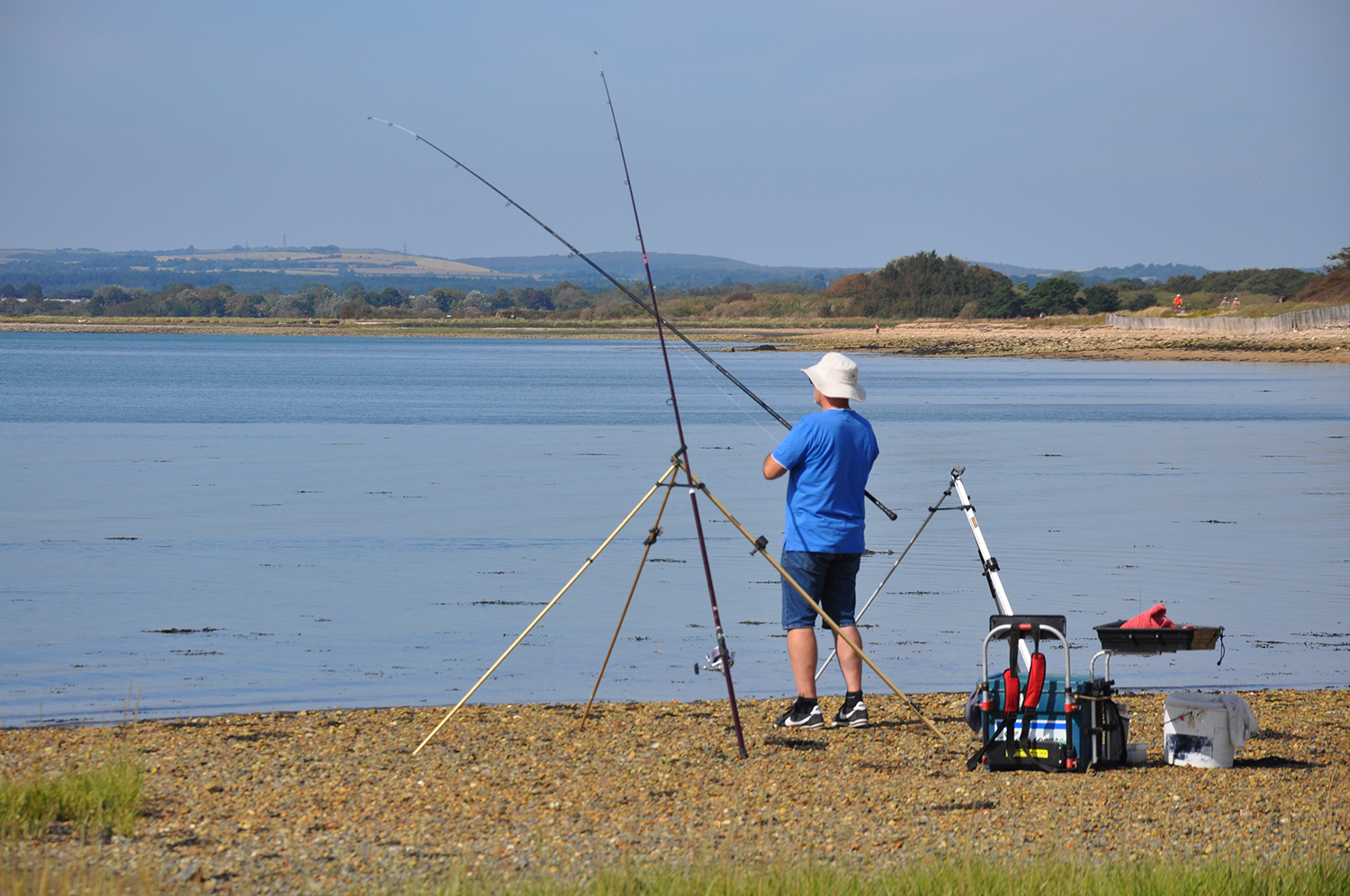
Ian fishing at Langstone Harbour, Hayling Island
ENTHUSIASM
We were heading to the western shoreline of Langstone Harbour in Hampshire for an afternoon session. This formerly superb flounder fishery, which has certainly fallen from grace in recent years, has seen other species take up residence especially during the summer.
Our main target species on this occasion was the more exotic, hard-fighting gilthead bream, which have appeared within Langstone Harbour in recent years, probably due to global warming. These are not monsters when compared to those caught from some of the deeper inlets and estuaries in Cornwall and Devon, instead ranging from just a few ounces up to a couple of pounds. There is a chance of a bigger fish though.
Joining us for the banter and a fun-filled session was my travelling companion Steve Lawrence from Poole. Once over the causeway which links Hayling Island to the mainland, there is a garage on the right after about half a mile. Just past the garage, a small gravel track leads to a car park at the water’s edge. Amazingly, we arrived thirty minutes early, only to see Ian already waiting and eager to wet a line. His enthusiasm for angling – or as he called it ‘fish bothering’ – was amazing and an example to all.
Within a few minutes we were heading for the shoreline along the western side of Langstone Harbour. As usual, in Ian’s company, the 10-minute walk was full of banter.
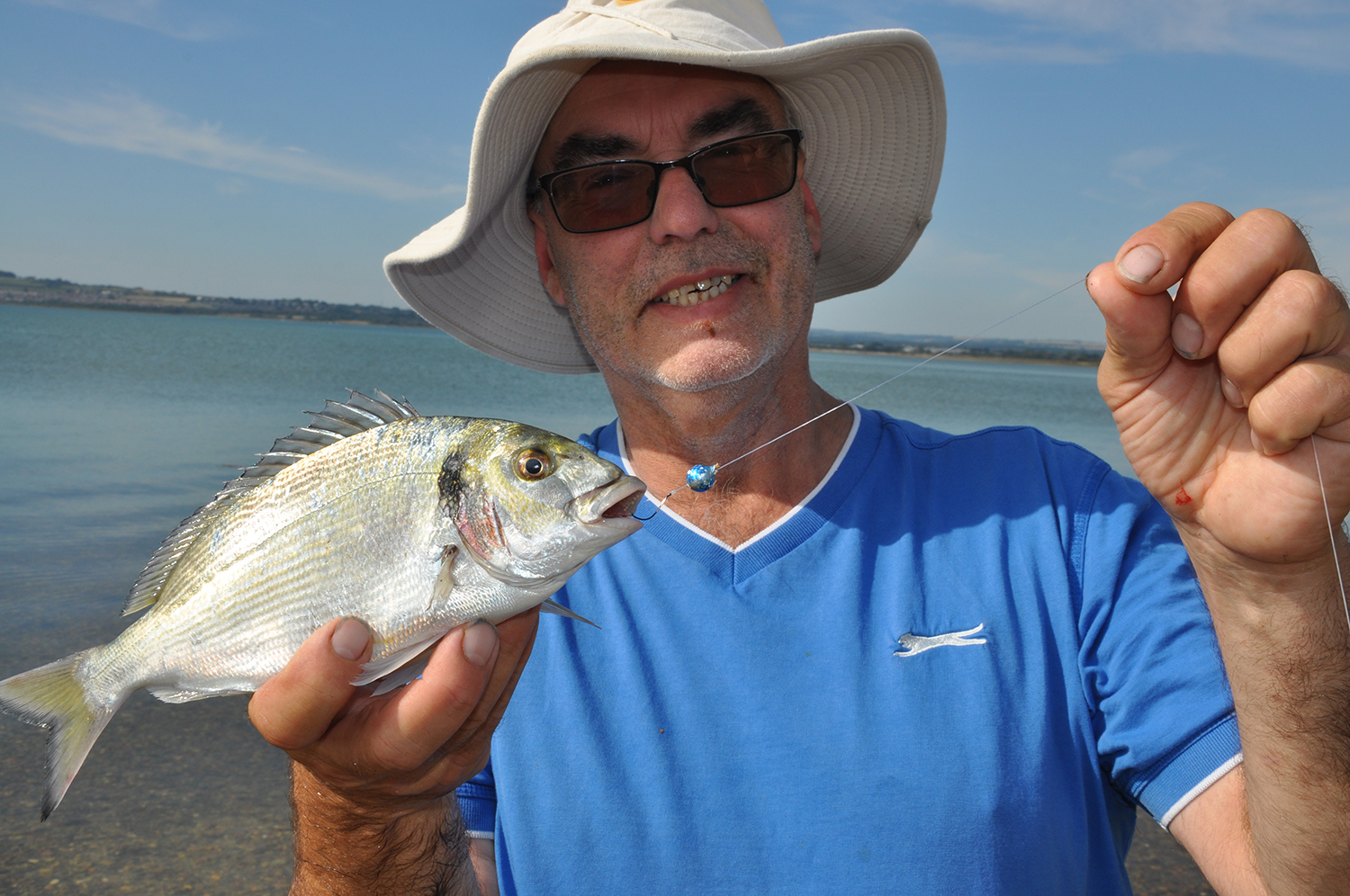
Ian with a gilthead bream
SIMPLE CHOICE
This is a very shallow venue, where the tide retreats some 500-600 yards over mud and gravel, hence we had timed our trip to fish the last three hours of the flood and the first two hours of the ebb.
Bait was pretty simple, a tenner’s worth of ragworms each was more than sufficient. We used two-up one-down rigs along with 10lb hooklengths. Ian chose a size 5 wormer short-shank pattern while I settled for the Kamasan B983, another wide gape, short-shank hook but very strong, along with decent pop-ups mainly to keep the bait away from the hordes of marauding crabs that roam over the mudflats. Steve fished size 6 Aberdeens, which have a longer shank and were to prove to be a mistake.
Lead weights must be chosen with care when fishing in very shallow water because, initially, anything over two ounces will become stuck in the soft mud resulting in lost tackle, which is both bad for the environment and hurts the pocket.
Despite being shallow, this is not a distance venue. A 50-yard lob is more than adequate for the giltheads. In fact, we could see shoals of small bass and mullet breaking surface within a few metres of the shoreline.
INSTANT BITES
As expected within seconds of our baits hitting the seabed the rod tips were rattling away, courtesy of the school bass that were giving other species little chance of finding our baits. After 20 minutes the shoals of these greedy blighters moved even closer to the shore, which gave our baits cast around 50 yards some respite.
As always, Ian was taking his fishing seriously and it was no surprise when, 10 minutes later, a delighted Ian gave a shout as he spotted a more aggressive bite normally associated with giltheads. Sure enough a few minutes later, his infectious smile greeted us as he landed the first gilthead. I have a feeling that Ian gave us one of his little dances of delight as we wandered over to inspect his catch. Of course, true to form Ian questioned how the fish had been foolish enough to take his bait. Naturally, it was all down to Ian’s angling skill.
Giltheads are frisky fish and this one had given Ian a really good tussle as it entered the shallows. While not huge, Ian’s fish, which had taken a ragworm on a size 5 hook, was certainly a welcome sight. That first gilthead gave us a buzz of excitement with both Steve and I missing similar bites shortly afterwards. Soon I was left puzzled after a series of slow pull-down bites, definitely not a member of the bream family or a bass. With the harbour seemingly void of flounders for the past few years it never even entered my mind that it could be a flattie sucking the bait, hence my genuine surprise when out popped a healthy flounder.
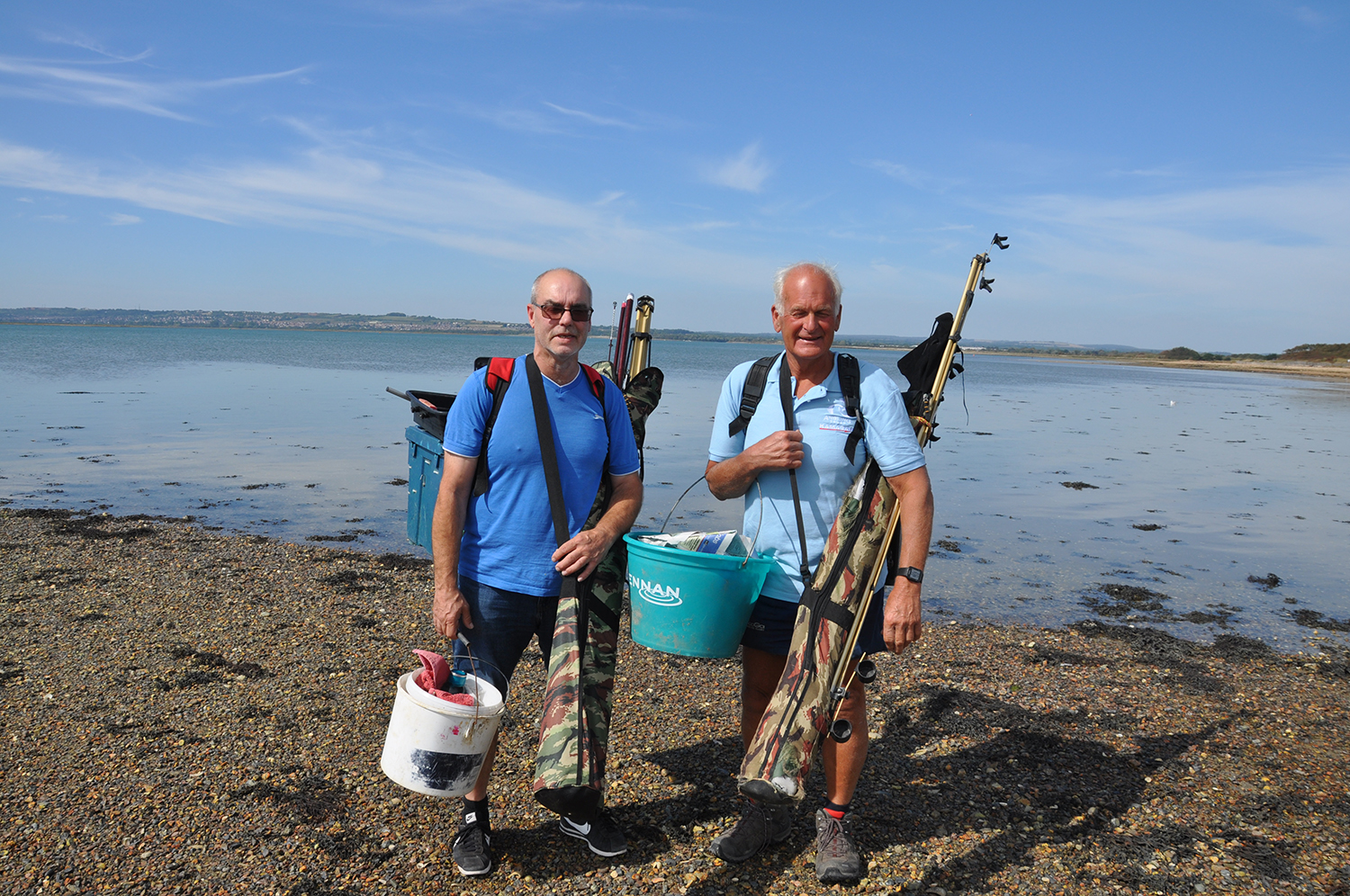
Old pals Ian and Chris together
LATE SHOW
Catching that flounder was a bonus, but with high water looming the action really switched on as we all had gilthead bites before, of course, it was Ian who landed a far better schoolie. Then it was my turn with a trio of giltheads in quick succession. The venue was on fire.
While we had missed a number of gilthead bites, Steve who was using the hooks with longer shanks could not make real contact. Giltheads are well equipped with rasping teeth ready to make short work of any crustaceans that are unfortunate enough to wander into their firing line. To stand any chance of piercing a gilt’s seemingly rock-hard mouth, you need a very sharp short-shank hook that enters the mouth at the correct angle. Steve was discovering to his cost that the longer-shanked hooks did not have enough penetration power.
Meanwhile, Ian and I were having a great session with the giltheads but on this occasion no small black bream, which we had half expected. Again, they had started to make their presence felt within Langstone in the previous few years. As the productive session was drawing to the end with the sun slowly dipping towards the horizon, there was just one more twist to this ‘fish bothering’ saga.
Right at the last knocking, Steve, who had already waved the white flag on the gilthead front, had a far better bite. His light rod tip really lunged over and the culprit turned out to be a sizable bass, which really showed its mettle as it entered the shallows. He had recorded the day’s heaviest fish but, alas, not a gilthead or flounder in sight. Ian trotted over and was the first to congratulate him. It was the right thing to say and a real tonic for a struggling Steve.
With the tide rapidly retreating and the light fading, we ambled back to the car and were left reflecting on what had been some superb fishing. I’m truly saddened by the departure of a dear friend. I won’t forget this session with a great man, a great angler and a great friend. Farewell Ian.
NEED TO KNOW
Getting there: From the A27, cross the causeway (Langstone Road) on to Hayling Island. Once over, you are on the A3023. Take a right just past the garage on your right into Victoria Road. A small gravel track leads to the car park. Walk to the south for 10-15 minutes.
TACKLE SHOP
Cosham Angling, 7a Northern Buildings, Northern Rd, Cosham, PO6 3DL,
Tel: 07940 057485.

